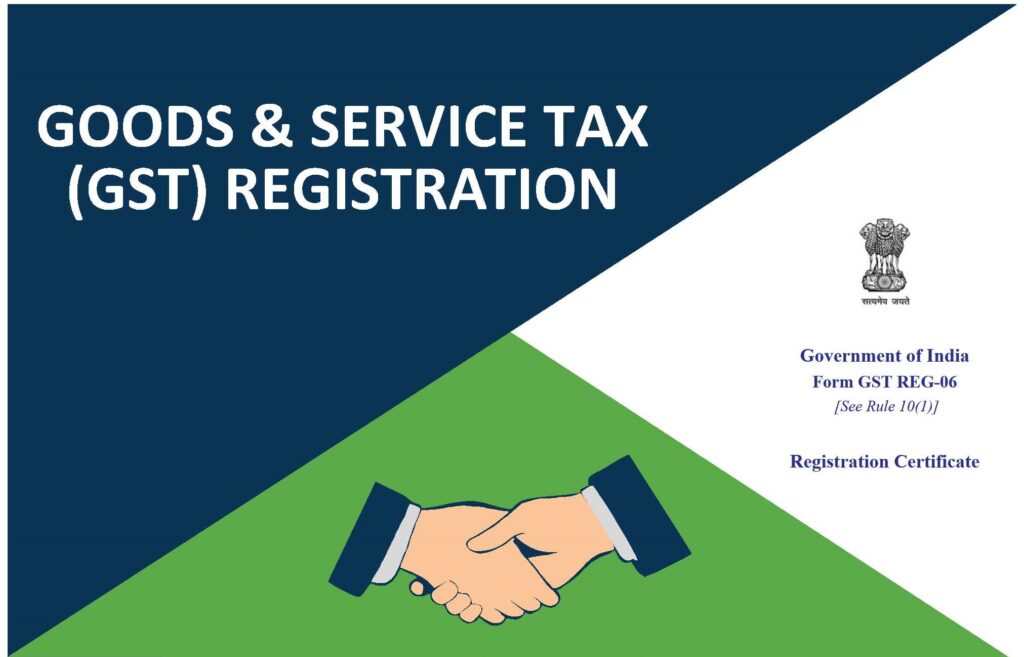Step-by-Step Overview to GST Registration: Whatever You Need to Find Out About the Application Refine

Eligibility Standards for GST Registration
Satisfying the eligibility requirements for GST enrollment is a basic need for businesses operating in India. As per the Item and Services Tax Obligation (GST) law, entities associated with the supply of services or goods must register for GST if their yearly turn over exceeds the recommended limit. For normal organizations, this limit is evaluated 40 lakhs for items distributors and 20 lakhs for company. In addition, particular unique group states have a lower threshold of 10 lakhs. In addition, companies associated with inter-state supply, laid-back taxable individuals, non-resident taxed individuals, and those required to pay tax under the reverse fee mechanism must additionally sign up for GST, regardless of their turnover.
Moreover, certain companies such as e-commerce operators, agents of a supplier, input solution distributors, and individuals providing through e-commerce systems are also needed to register for GST, regardless of their turnover. Understanding and fulfilling these qualification criteria are vital actions for organizations looking to follow the GST policies in India.
Required Files for Application
When requesting GST registration, businesses require to supply particular files to finish the application process successfully and properly. The called for documents differ depending on the sort of business entity seeking registration. For a sole proprietorship, the papers typically include the proprietor's PAN card, Aadhaar card, address evidence of the business, checking account statements, and pictures. Collaboration firms need to submit collaboration act, PAN cards of partners, Aadhaar cards, address evidence of the principal workplace, bank account statements, and photos. Companies have to supply their Certificate of Unification, Memorandum of Organization, Articles of Organization, frying pan cards of directors, Aadhaar cards, address proof of the licensed office, financial institution declarations, and photos. Additionally, all entities should submit proof of the location of service, like rental arrangement or electrical power bill, and consent kinds. Making sure that all needed records are in order and submitted correctly is vital for a smooth GST enrollment procedure.
Step-by-Step Application Process
To successfully complete the GST enrollment procedure, organizations should comply with an organized step-by-step application treatment. The initial step is to go to the GST online portal and click on the 'Provider' tab, followed by 'Enrollment' and after that 'New Registration.' Next, provide the necessary information such as the legal name of business, PAN, email address, mobile number, and state in which the business is located. After entering the information, an OTP will certainly be sent to the signed up mobile number and email for confirmation. When the OTP is validated, a Short-lived Reference Number (TRN) is generated which can be utilized to conserve the application and go back to it later.

Comprehending GST Enrollment Charges
Comprehending the fees connected with GST registration is vital for businesses seeking conformity with tax guidelines. The GST enrollment fees differ depending upon the kind of company entity looking for registration. For normal taxpayers, the cost is 1000, split just as between the Central and State Federal Governments. For businesses operating in several states, the cost is 5000, additionally split in between the Central and State Federal Governments. In the situation of non-resident taxpayers or informal taxpayers, the registration charge is 5000. In addition, particular entities are excluded from paying the registration cost, such as input service suppliers, UN bodies, consular offices, and so on. It's vital for companies to factor in these registration costs when preparing their compliance spending plan. Failure to pay the requisite costs can result in hold-ups in the registration procedure and non-compliance with GST policies, leading to fines and lawful repercussions. For that reason, understanding and budgeting for these fees are integral components of the GST enrollment procedure.
Staying Clear Of Usual Application Blunders
In navigating the GST registration procedure, avoiding typical application mistakes is crucial for organizations intending to improve compliance procedures and prevent prospective troubles. One common error companies make is giving inaccurate info, such as going into wrong PAN details or organization names. Confirming all information prior to entry is critical to avoid delays in the application procedure. One more usual mistake is falling short to provide the essential supporting records, leading to being rejected or extended handling times. Making sure all called for papers are submitted appropriately and are up to date can dramatically speed up the enrollment procedure. In addition, organizations usually overlook the importance of choosing the appropriate business structure throughout enrollment. Picking the incorrect kind, such as signing up as a normal taxpayer instead of a composition dealership, can lead to problems down the line. By meticulously reviewing and ascertaining all info provided throughout the GST enrollment application, organizations can mitigate these usual errors and promote a smoother registration procedure.
Conclusion
To conclude, recognizing the eligibility standards, needed files, application process, fees, and typical errors to avoid are crucial steps in efficiently registering for GST. By following the step-by-step overview supplied, services can ensure a reliable and smooth application procedure. It is essential to follow the standards stated by the authorities to stop any type of hold-ups or issues in the registration process.
.jpg)
The GST registration fees vary depending on the type of organization entity applying for registration. In addition, look what i found companies typically ignore the value of picking the correct company framework throughout enrollment - Get your GST registration done today in Singapore. By very carefully double-checking all information and evaluating offered throughout the GST registration application, organizations can reduce these typical errors and promote a smoother enrollment procedure
Comments on “How to Successfully Get Your GST Registration Done Today in Singapore”